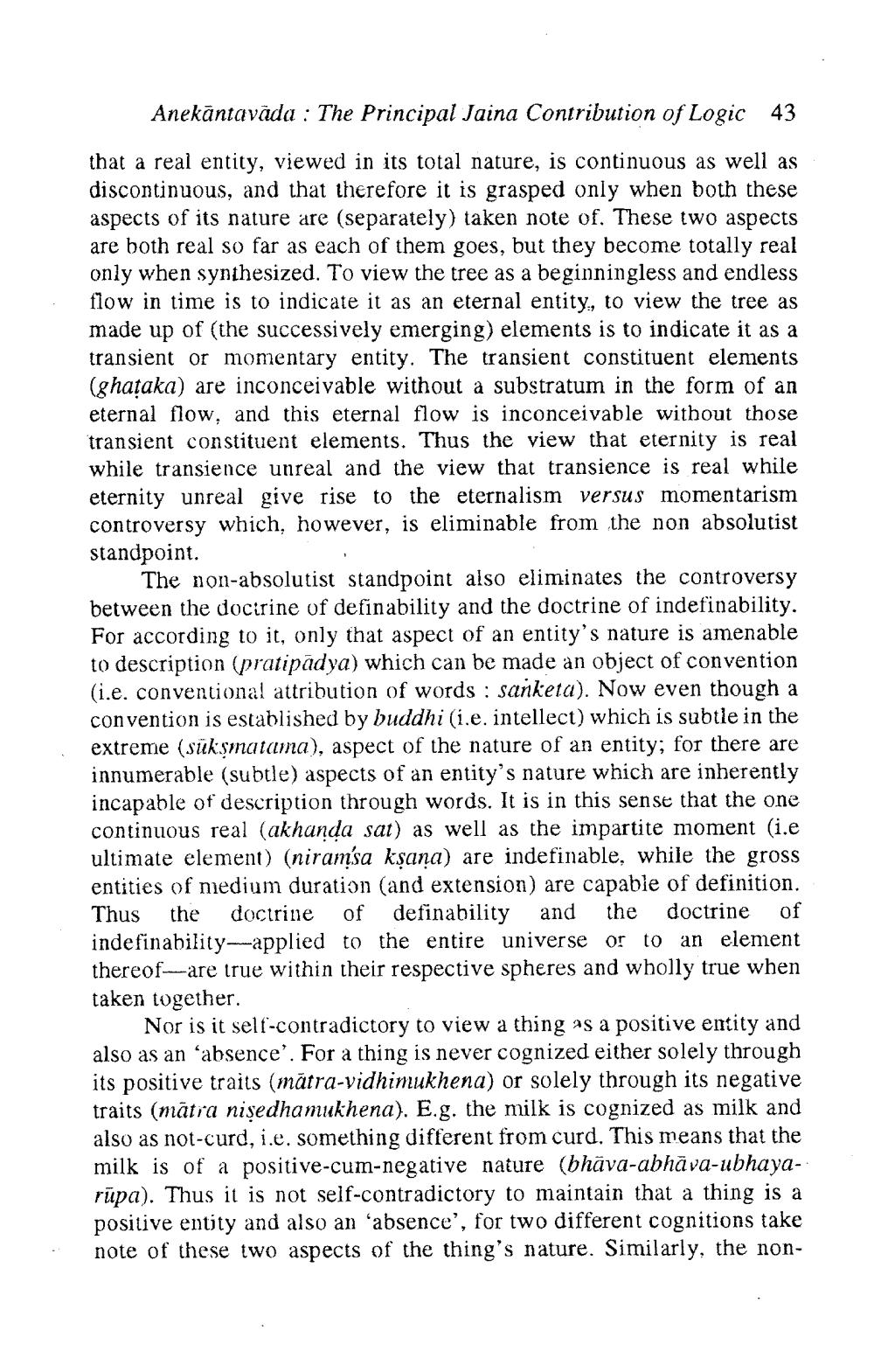________________
Anekāntavāda : The Principal Jaina Contribution of Logic 43
that a real entity, viewed in its total nature, is continuous as well as discontinuous, and that therefore it is grasped only when both these aspects of its nature are (separately) taken note of. These two aspects are both real so far as each of them goes, but they become totally real only when synthesized. To view the tree as a beginningless and endless flow in time is to indicate it as an eternal entity, to view the tree as made up of (the successively emerging) elements is to indicate it as a transient or momentary entity. The transient constituent elements (ghataka) are inconceivable without a substratum in the form of an eternal flow, and this eternal flow is inconceivable without those transient constituent elements. Thus the view that eternity is real while transience unreal and the view that transience is real while eternity unreal give rise to the eternalism versus momentarism controversy which, however, is eliminable from the non absolutist standpoint.
The non-absolutist standpoint also eliminates the controversy between the doctrine of definability and the doctrine of indefinability. For according to it, only that aspect of an entity's nature is amenable to description (pratipadya) which can be made an object of convention (i.e. conventional attribution of words: sanketa). Now even though a convention is established by buddhi (i.e. intellect) which is subtle in the extreme (süksmatama), aspect of the nature of an entity; for there are innumerable (subtle) aspects of an entity's nature which are inherently incapable of description through words. It is in this sense that the one continuous real (akhanda sat) as well as the impartite moment (i.e ultimate element) (niramsa ksana) are indefinable, while the gross entities of medium duration (and extension) are capable of definition. Thus the doctrine of definability and the doctrine of indefinability-applied to the entire universe or to an element thereof--are true within their respective spheres and wholly true when taken together.
Nor is it self-contradictory to view a thing as a positive entity and also as an 'absence'. For a thing is never cognized either solely through its positive traits (mätra-vidhimukhena) or solely through its negative traits (mātra niședhamukhena). E.g. the milk is cognized as milk and also as not-curd, i.e. something different from curd. This means that the milk is of a positive-cum-negative nature (bhāva-abhäva-ubhayarūpa). Thus it is not self-contradictory to maintain that a thing is a positive entity and also an 'absence', for two different cognitions take note of these two aspects of the thing's nature. Similarly, the non




